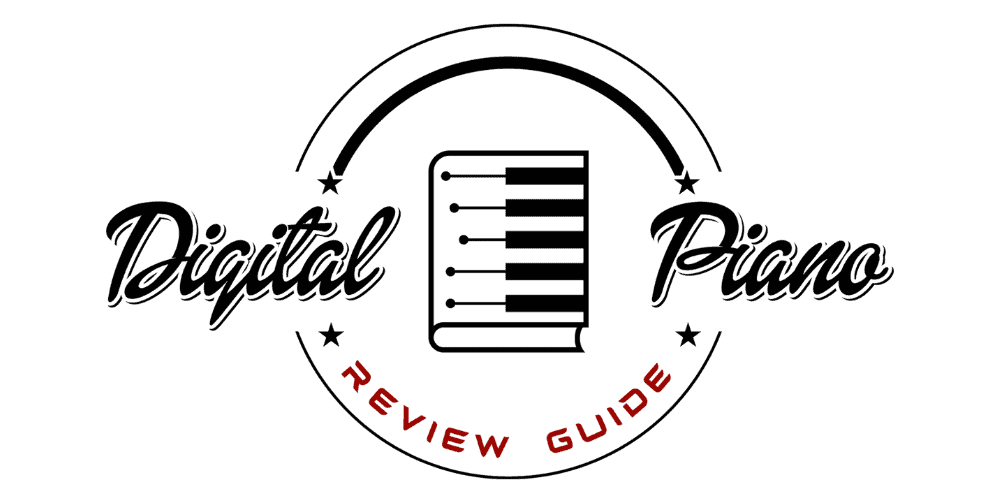Hammond XK-3C review

Hammond continues to be the leading company of digital organ releases, focused on providing an affordable and user-friendly model that lives up to the sonic standards of the original B3 organ.
Shortly before the release of the Hammond XK-3C, the Hammond ‘New B3’ was released. The ‘New B3’ utilized some of the original mechanical concepts of the original B3, while taking advantage of newer technologies to make the instrument modern. The ‘New B3’ was a success, largely due to the fact that no other instrument on the market could achieve those same classic B3 sounds other than the original B3 itself.
The problem with the ‘New B3’ was that it was well out of the price range of most players, upwards of $20,000. Therefore, by stark contrast, we have the Hammond XK-3C (which we will review in-depth today), which offers the classic B3 sound, Leslie speaker simulation, and loads of other realistic organ patches for an affordable price. The Hammond XK-3C is a well built machine, but it’s not cheap. So, let’s find out if it’s worth your time and money.
In order to do that, we’ve created an interactive table below that allows you to directly compare the Hammond XK-3C to other noteworthy keyboards that are available on the market:
| Photo | Model |
|---|---|
| Roland RD-88 | |
| Nord Stage 3 | |
| Casio PX5S | |
| Nord Piano 5 | |
| Yamaha YC88 | |
 | Nord Grand |
| Casio PX-560 |
The Aesthetic
The construction and aesthetic of the instrument itself is a callback to the original B3 organ. Slick, wood paneling encases the electronic innards, providing a very classy look. From the player’s perspective, the keyboard boasts a black and brown aesthetic, containing drawbar sliders and a healthy amount of options on the front panel. This isn’t a synthesizer, however, so the amount of electronic options you will see, although varied, don’t litter the front panel.
One can summarize the visual appeal of the Hammond XK-3C in two words—“slick” and “classy.” Whether the keyboard will take up a space on the live stage, backed by other electronic and acoustic instruments, or taking a seat next to synthesizers in your keyboard collection or home studio, the Hammond XK-3C will fit right in. The wood paneling and the simplistic, LED-lit knobs and sliders tell you exactly what the keyboard is supposed to be when you look at it—new technology that provides users with a callback to the early days of Hammond organs.

The LCD screen on the left-side of the keyboard is aesthetically appropriate with the rest of the keyboard, which is great, but I sometimes wished it was a bit bigger. While navigating drawbar sliders, split manual settings, and tonewheel operations, it would have been nice if I didn’t have to hover my head above the screen to clearly see what was happening.
What happens on that screen isn’t essential if you know what you’re doing, but while I was learning the keyboard, I wanted to know what was being altered on the screen. I understand that they didn’t want the keyboard to look too busy, but I think they had room to make that screen a tad bigger and brighter.

And before we move on, please take a brief moment to view some of the best-selling pianos currently available online, and then see how well they compare to the price and overall effectiveness of the Hammond XK-3C.
| BEST SELLERS |
|---|
| 1) Yamaha P-515 |
| 2) Casio PX-S3100 |
| 3) Casio PX-870 |
| 4) Roland FP-E50 |
| 5) Roland FP-30X |
Hammond Keyboards vs Digital Pianos
It’s especially important to know what to expect from the feel of a Hammond organ keyboard because they function differently than general 88 key digital pianos. High-end digital pianos, for example, offer the player a full-sized, weighted keyboard in order to approach the real, mechanical feel of an acoustic piano. Sometimes digital pianos contain built-in hammer systems that function only to give the player the feeling of playing a real piano.
Hammond keyboards aren’t meant to feel like real pianos. They are built around the design of organs, which don’t contain weighted keys or mechanical hammer systems.

This is important to understand because many people who are new to organ-playing styles may not realize that a non-fully-weighted keyboard is exactly what you want from a Hammond keyboard. If you’re accustomed to playing high quality digital pianos and then make the move to an electronic Hammond keyboard, it may feel “cheap” or not realistic. I mention this because I believe it’s important for beginners to understand that Hammond organs serve a different function than digital pianos, and the design choice for the keys is purposeful.
The Hammond XK-3C feels responsive and sturdy. Each button, knob, and slider feels carefully designed, and the front panel feels very natural to navigate. The keyboard is designed with music in mind. The keys bounce back very quickly, allowing for quick-moving jazz licks and repeated notes. The traditional waterfall keyboard is very comfortable, and the smoothness of each key’s edge allows for rocking glissandos and portamento-like embellishments to give your music that soulful characteristic. This keyboard is comfortable, and the light touch of the keys means you can play forever.
The Sound
The main selling point for any Hammond keyboard isn’t the realistic piano sounds or synthesizer options (although Hammonds do boast fantastic-sounding piano patches). The fundamental element, the thing that makes a Hammond a Hammond, is the organ sound and Leslie speaker combination. This is where Hammond continues to outshine all other manufacturers, and the Hammond XK-3C is no exception.
It will come as no surprise that the Hammond XK-3C contains impressive organ patches that immediately satisfy those B3 purists. The real magic happens when you combine those impressive patches with the plethora of other options this keyboard contains. Master volume, tone, and valve-overdrive editing options are at the left side of the keyboard, next to the LCD screen that gives you a visualization of the drawbar settings.

To the right of the LCD screen, you will find the more traditional organ options. The rotary vibrato and chorus selector reside to the left of twenty drawbar sliders—two sets of nine drawbars (one set for each manual) plus a pair of pedal drawbars. These options alone allow for nuanced sound-building and fine tuning, encouraging players to utilize sliders to achieve the perfect amount of overtone quality and overdrive.
Of course, since this keyboard comes with only one manual, the Hammond XK-3C comes with a “Split” buttons, which splits the one keyboard in half, thus allowing the player to edit and perform two sounds at once. The traditional setup for this is a reserved, bass patch from the left half and a more complex lead organ sound from the right half. After splitting the keyboard, it’s quite intuitive to edit your drawbar settings for each sound to your desired levels. If you’re serious about utilizing two complete keyboards for your playing, Hammond offers identical, supplementary keyboards to attach to your XK-3C. If interested, the Hammond XLK-3 is what you want.
The lower twelve keys of the Hammond XK-3C are negatively colored to signal alternative functions. Each of these keys can be assigned to trigger a new patch when pressed, allowing for a seamless transition between sounds during a performance. For example, if you’re rocking out on an overdriven B3 patch and want to immediately tame your sound to an FM Rhodes patch, you can program one of the keys at the lower end of the keyboard to immediately switch when pressed.
This feels very natural when playing because you don’t have to navigate any knobs or buttons. Pressing one of the supplementary negative keys just feels like playing a note, and you won’t miss a beat.
Overall, the sound of the Hammond XK-3C is quite impressive, and you’re not going to get the same kind of organ sounds, rotary vibrato/chorus, and Leslie speaker effect from any other brand. The sounds are great in this keyboard, and even the old-fashioned B3 snob will be satisfied.
And even if you want more options, the Hammond XK-3C can be hooked up to a laptop and play your desired VST you may have installed. So, if you have other organ sounds you want to try out, you are free to do so while still having those comfortable Hammond keys under your fingers.
Target Market
Despite the nuance of the Hammond XK-3C’s drawbar settings and Leslie speaker simulation, this is a keyboard that anyone can easily learn and master. You don’t have to be a seasoned B3 aficionado to appreciate the sound and feel of this keyboard (although it does help). Just looking at the front of the keyboard will tell you that you won’t have to master a complex system of synthesis to achieve what you want.

In fact, all of the pre-installed patches are incredibly satisfying and rewarding. I wouldn’t consider it sinful to leave the installed patches how they are with this keyboard. You won’t necessarily be wasting resources if you don’t override with your own edited patches. However, it is great that saving your patches is not daunting either. This can be a great keyboard for beginners and experts alike.
That being said, the price of the keyboard (upwards of $3,000) may deter some players that are new to the world of Hammond keyboards and organ sounds. If you feel this way, know that there are cheaper options to get your feet wet in the Hammond brand before shelling out three-grand for one keyboard. The Hammond SK1, for example, is a thousand dollars cheaper and will still give you the great Hammond feel and sound I’ve mentioned throughout this review.
This keyboard will be a great fit for you if you’re looking for the following characteristics:
- Realistic organ sounds
- Comfortable, responsive keyboard (great for fast playing and glissandos)
- Portability
- Seamless patch changes during performances
- Nuanced drawbar settings
If you’re still looking for a keyboard that offers more options than the XK-3C, I would recommend looking to the XK5, especially if you want more editing options in the drawbar area.
- RATING: 4.5/5
If you enjoyed this article, we encourage you to “like” our Facebook page too!






